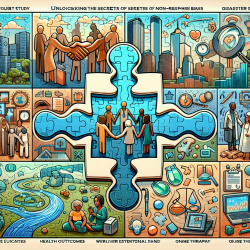Understanding "Kiyang-yang": A Cultural Idiom of Distress
In the field of speech-language pathology, understanding cultural contexts and expressions of distress is crucial for effective therapy. The research article "Kiyang-yang, a West-African Postwar Idiom of Distress" by Joop T. de Jong and Ria Reis provides a profound insight into how cultural idioms of distress can be utilized to improve therapeutic outcomes, particularly in children.
The Genesis of Kiyang-yang
The Kiyang-yang movement originated in southern Guinea Bissau in 1984 as a healing cult for young barren women. Over time, it evolved into a broader movement that addressed individual and collective stressors linked to post-war trauma. This idiom of distress provided a shared symbolic language that allowed individuals to express and transform their suffering in culturally resonant ways.
Implications for Practitioners
For practitioners, the Kiyang-yang movement offers several insights:
- Cultural Sensitivity: Recognizing the importance of culturally specific expressions of distress can enhance therapeutic relationships and outcomes. Practitioners should strive to understand the cultural idioms relevant to their clients' backgrounds.
- Symbolic Language: The use of symbolic language in therapy can help clients articulate feelings that are difficult to express directly. Encouraging clients to use metaphors or stories can facilitate deeper emotional exploration.
- Community and Collective Healing: The Kiyang-yang movement highlights the power of community in healing. Practitioners can incorporate group therapy or community-based interventions to support collective healing processes.
Encouraging Further Research
While the Kiyang-yang movement provides valuable insights, further research is needed to explore how idioms of distress can be integrated into therapeutic practices across different cultural contexts. Practitioners are encouraged to engage in research that examines the intersection of culture, language, and therapy to develop more effective and culturally responsive interventions.
Conclusion
The Kiyang-yang movement is a testament to the resilience and adaptability of cultural expressions in the face of trauma. By understanding and integrating idioms of distress into therapeutic practices, practitioners can enhance their ability to support clients in navigating their unique cultural landscapes.
To read the original research paper, please follow this link: Kiyang-yang, a West-African Postwar Idiom of Distress.










